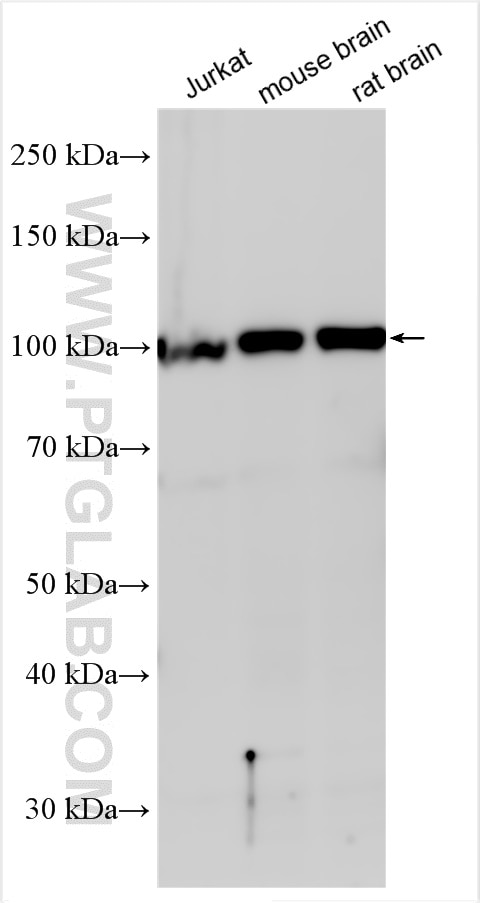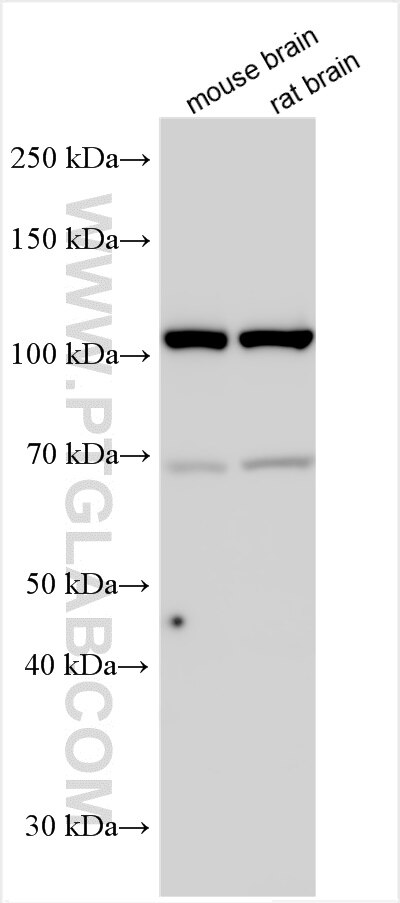Anticorps Polyclonal de lapin anti-PSMD1
PSMD1 Polyclonal Antibody for WB, ELISA
Hôte / Isotype
Lapin / IgG
Réactivité testée
Humain, rat, souris
Applications
WB, ELISA
Conjugaison
Non conjugué
N° de cat : 17709-1-AP
Synonymes
Galerie de données de validation
Applications testées
| Résultats positifs en WB | cellules Jurkat, tissu cérébral de rat, tissu cérébral de souris |
Dilution recommandée
| Application | Dilution |
|---|---|
| Western Blot (WB) | WB : 1:500-1:1000 |
| It is recommended that this reagent should be titrated in each testing system to obtain optimal results. | |
| Sample-dependent, check data in validation data gallery | |
Informations sur le produit
17709-1-AP cible PSMD1 dans les applications de WB, ELISA et montre une réactivité avec des échantillons Humain, rat, souris
| Réactivité | Humain, rat, souris |
| Hôte / Isotype | Lapin / IgG |
| Clonalité | Polyclonal |
| Type | Anticorps |
| Immunogène | PSMD1 Protéine recombinante Ag12009 |
| Nom complet | proteasome (prosome, macropain) 26S subunit, non-ATPase, 1 |
| Masse moléculaire calculée | 953 aa, 106 kDa |
| Poids moléculaire observé | 102 kDa |
| Numéro d’acquisition GenBank | BC094720 |
| Symbole du gène | PSMD1 |
| Identification du gène (NCBI) | 5707 |
| Conjugaison | Non conjugué |
| Forme | Liquide |
| Méthode de purification | Purification par affinité contre l'antigène |
| Tampon de stockage | PBS with 0.02% sodium azide and 50% glycerol |
| Conditions de stockage | Stocker à -20°C. Stable pendant un an après l'expédition. L'aliquotage n'est pas nécessaire pour le stockage à -20oC Les 20ul contiennent 0,1% de BSA. |
Informations générales
PSMD1 is a component of the 26S proteasome and contributes to its function regulation. PSMD1 performs an important role in the regulation of numerous cellular processes through the degradation of proteins targeted for breakdown through ubiquitin. PSMD1 has been found to be closely related to a variety of cancers such as lung adenocarcinoma and breast cancer.
Protocole
| Product Specific Protocols | |
|---|---|
| WB protocol for PSMD1 antibody 17709-1-AP | Download protocol |
| Standard Protocols | |
|---|---|
| Click here to view our Standard Protocols |



